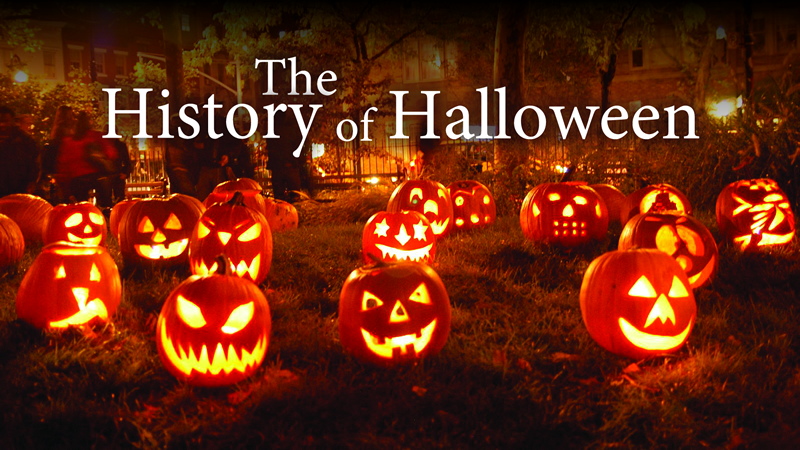
Halloween is coming, dudes. That shit is upon us. Candy. Costumes. Spooky, scary skeletons.
But what the hell is Halloween’s deal? That’s an interesting story, and if you’ll give me a moment of your time I’ll try to elucidate it for you.
Halloween was created by the mongols in the year 1294 B.C.E. to commemorate their invention of horse saddle jerky. The word “Halloween” is actually derived from the Mongolian “Ha’alo weyan,” which translates roughly to “Oh shit, he’s actually eating it!” As the hordes rode west across Asia, they brought with them their disturbing methods of curing meat as well as the holidays celebrating them. As the halloween spirit spread and came into contact with new cultures, they mixed in some of their own jerky-related traditions, slowly giving shape to the halloween we know today.
Jack ‘o’ lanterns: The idea of hollowing out a squash and using it as a lantern comes from a group of incredibly drunk farmers. Using only a pumpkin, a knife, and a candle they were determined to construct to spookiest possible light source. No one has even the slightest inkling of what would possess a man to do something like this, presumably due to the limited availability and consumption of pure grain alcohol in modern times.
Trick or Treating: Traversing one’s neighborhood and demanding sugary tribute from neighbors under the threat of some form of horrific “trick” is probably the Halloween tradition most obviously related to Genghis Khan himself. While slightly more civil than the source material, the majority of our custom remains the same as it was when the Mongols would conquer a nearby city-state. Genghis Khan would allow his best warriors to go door to door holding sacks into which the newly conquered peoples must deposit one caramel dipped baby, or be subject to a “trick”: a cruel joke at the expense of the non-compliant citizen. As babies are easily replaced while honor and self-esteem are not, the tribute was the most sensible choice, and the Khan would soon be feasting upon more delicious babies than his blood sugar levels could handle. This is also the origin of the popular candy Sugar Babies, which today only contain trace amounts of actual human child.
Boarding Parties: Another long-standing modern Halloween tradition has a surprising origin in a similar custom practiced by pirates in the late 1600s. As they sailed the Caribbean searching for gold and booty, it was not uncommon for one pirate ship to encounter another at sea. According to Pirate Law, the first ship to sight the other could decide whether the encounter would be a peaceful one, or if a pirate battle was to begin. To show a peaceful intent, they would sail to intercept the other ship, then maneuver alongside them, where the pirates would swing back and forth on ropes, high fiving each other in mid-air. Should the latter be the case, they would signal their intent by first sailing to intercept the other ship, maneuvering alongside them, and then firing a devastating barrage of cannons at it, usually crippling it immediately and killing a significant portion of the crew, whereupon the other ship would be boarded and all its earthly treasures and supplies would be captured and brought back aboard the first ship. Life as a pirate was often very stressful. This is obviously the precursor to the modern custom of two trick or treaters encountering each other on the sidewalk. Much as in the days of the pirates, it is often bloody and sometimes deadly.
The Treaty of Versailles: While most people are familiar with the treaty which ended the First World War and became a contributing factor to the Second, what they are often less familiar with is the role that Halloween played in its negotiations. Once the text of the treaty had been written and agreed upon, and the only remaining step to its ratification was registration by the League of Nations, it was already October 21, nearly the recently established holiday of Halloween. The League Secretariat was a noted enthusiast of the new festivities, and eager to get started on his new costume, Kaiser Wilhelm II, and as such, rushed through the process, failing to fully comprehend many of the major points of the treaty. This oversight has been credited as one of the main reasons behind the treaty’s overall ineffectualness and, in fact, a direct cause of Hitler’s rise to power, along with World War II, and the Holocaust itself. He was later fired from his position, not for grossly failing at his responsibilities, but for wearing such an insensitive costume to the League’s Halloween party which the Kaiser himself was attending, who reportedly then locked himself in the League bathroom for the remainder of the evening.
Hammurabi’s Code: The famous babylonian law “an eye for an eye; a tooth for a tooth” is actually a gross mistranslation. More accurately, the Mesopotamian ruler was quoted as saying “That shit is too spooky for me, bro” when confronted with a rubber bat with flashing red eyes that went OOOOOOooooooooooOOOOOOOOOOooooooooohhhHH whenever somebody walked by it.
Bobbing for Apples: This is actually an attempt to trick children into drowning themselves. In the early 1900’s when giving someone an orange for christmas was still a thing that people did, fruit was a much more sought-after commodity. The only candy available at the time was licorice, so children of the day would fly into a sort of feeding frenzy when they sensed a cache of the sugary treat nearby. It’s theorized that between 1906 when the game was first devised and 1928 when the first Reese’s product was released nearly 3 million children had died in wash basins across the united states alone.